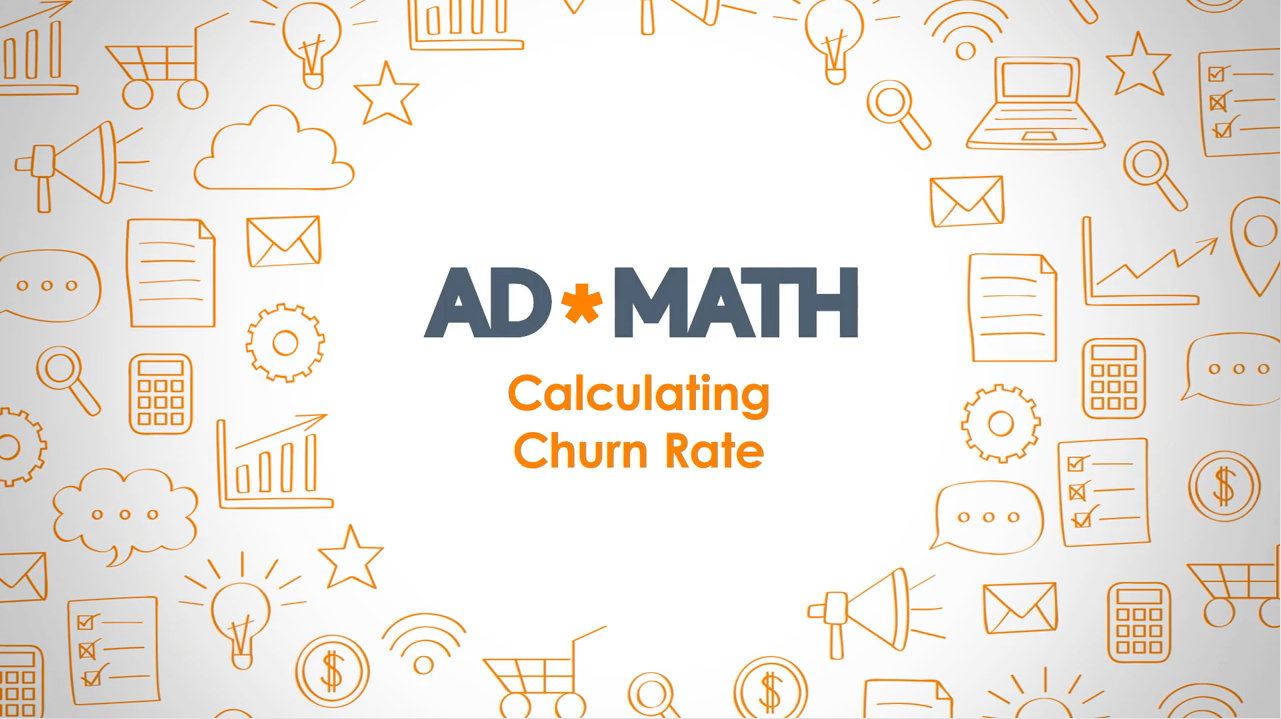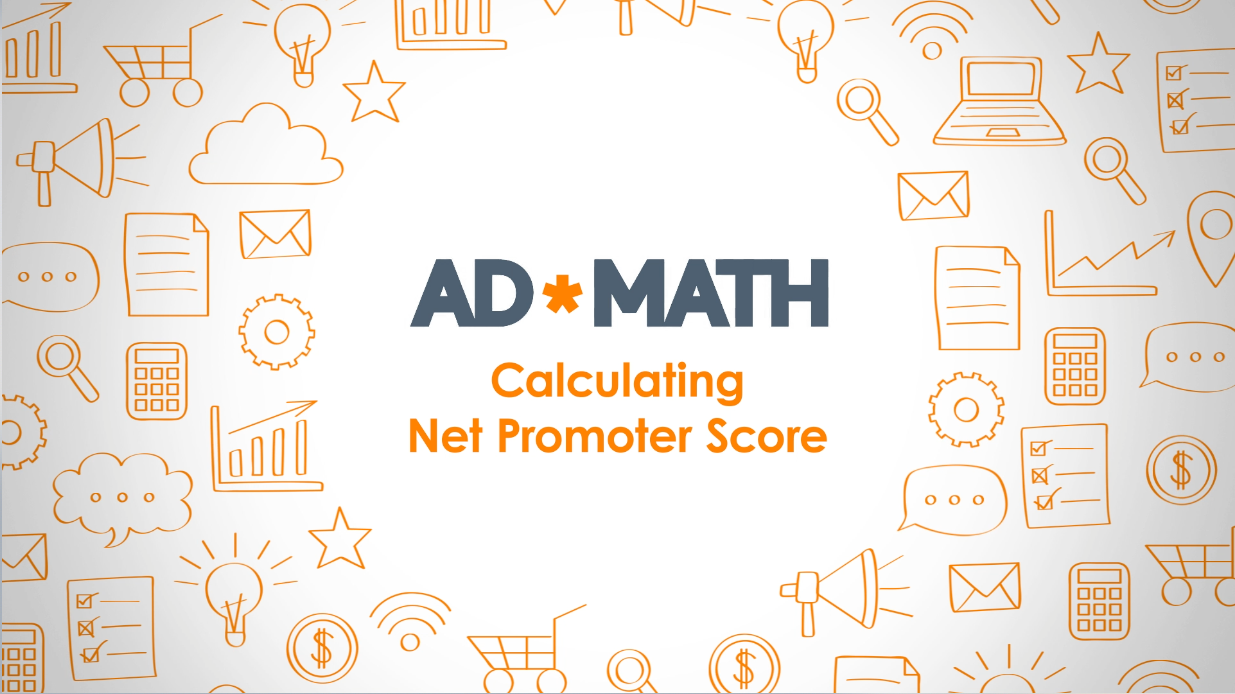How to Calculate Your Net Promoter Score (NPS)
In this Ad Math video, we discuss how to calculate your Net Promoter Score.

In marketing, we spend a lot of time trying to attract new customers, but it’s also important to know how many customers you may be losing. So, in this video, we’re going to discuss how to figure out your churn rate.
Unfortunately, not all customers are loyal. Sometimes, no matter how hard you try, some customers decide to move on to another company and its products (see our post on the value of email subscribers) Knowing how many customers you lose to the competition vs. how many you retain will help inform your marketing strategy and may even guide your product strategy.
Your churn rate refers to the percentage of customer loss that a business experiences over a specific period of time and the way to figure that out is pretty straightforward:
Depending on your product and industry, knowing your churn rate can help you understand why customers are leaving so that you can reduce that number in the future through revised marketing or product plans. The reason it’s important to identify and address these issues is that it’s often much more expensive to acquire a new customer than it is to keep a current customer happy.
In marketing, we spend a lot of time trying to attract new customers, but it's also important to know how many customers you might be losing. So in this video, we're gonna discuss churn rate.
Unfortunately, not all customers are loyal. Sometimes, no matter how hard you try, some customers decide to move on to another company and its product. Knowing how many customers you lose to the competition, versus how many you retain will help inform your marketing strategy and may even guide your product and pricing strategy. Your churn rate refers to a percentage of customers that your business loses over a specific period of time. And the way to figure that out is pretty straightforward.
So to understand your churn rate, you take the number of customers lost over a time period over the number of active customers at the start of that time period. So for example, let's look at Netflix.
At the beginning of 2016, let's say Netflix had 45 million U.S. subscribers, and then they had a grandfathered-in pricing structure that expired during the middle of that year, and they lost half a million subscribers. So you do some quick math on that and the churn rate is 0.01, or 1%. Now, a 1% churn rate, or any churn rate, doesn't necessarily mean Netflix is doing poorly, they could've added millions of subscribers during that year. All this is doing, is looking at how quickly they're losing subscribers, regardless of how quickly they're gaining subscribers.
So depending on your product and industry, knowing your churn rate, can help you understand why customers are leaving so that you can reduce that number in the future, through revised marketing, product plans or even changing the pricing.
The reason it's important to identify and address these issues is because it's often much more expensive to acquire a new customer than it is to keep a current customer happy. That's it for this week's video.
Please take a moment to help us out with a quick click of the like and subscribe buttons. And if you have some Ad Math you'd like us to dive into in an upcoming video, let us know by adding it in the comments.
Sign up for our monthly newsletter to receive updates.

In this Ad Math video, we discuss how to calculate your Net Promoter Score.

Your market share represents the percentage of an industry, category, or the total sales within a market earned by your company over a set time...

When thinking of conversion rate optimization, people often jump right to page design; however, the psychology behind decision-making often plays an...